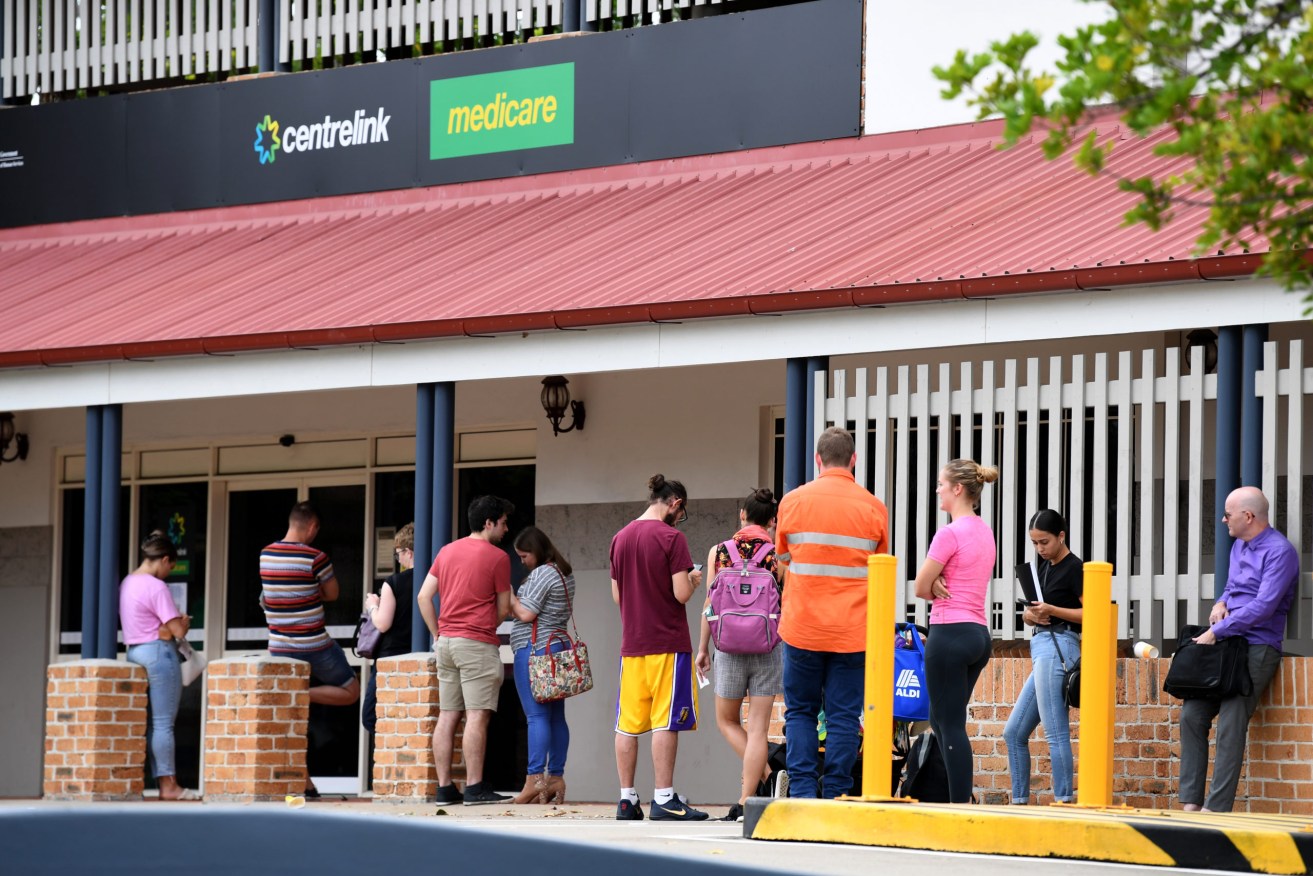Underemployment ‘dampening’ SA economy as JobKeeper nears end
Casual and part-time work may be slowing South Australia’s economic demand despite positive headline employment figures in the wake of the pandemic’s initial big hit to business and jobs, according to an economic analyst.


Photo: AAP/Dan Peled
Australian Bureau of Statistics figures for January showed South Australia had the highest under-employment rate in the country in December, at 10.4 per cent compared with the national average of 8.5 per cent.
The ABS defines underemployment as including part-time workers who indicate that they would prefer to work more hours, and full-time workers who did not work full-time hours in the reference period for economic reasons.
The data put the state’s unemployment rate at 6.4 per cent (seasonally adjusted) – a rise from 6.2 per cent for November. This was below the national average of 6.6 per cent.
The latest figures were not the first time South Australia’s underemployment had sat above the national average.
In November, the state recorded the highest rate in the country, with 10.7 per cent of South Australians wanting more work, compared with 9.4 per cent nationally.
South Australian economic analyst and Flinders University Professor John Spoehr said the high rate of underemployment suggested a large proportion of South Australians had been working fewer hours as a result of the coronavirus pandemic.
“In South Australia, which has a higher dependency on the service sector, that’s reflected in our marginally higher underemployment rate,” he said.
“It reflects a nervousness by employers as well, about them offering more hours to their workers in the current environment.”
Innovation and Skills Minister David Pisoni said the state had “a history of systemic underemployment”.
He said the State Government was addressing the issue through increased skills training and the development of industry sectors such as defence, space and the creative industries.
“Although there is much more work to do, last month’s increase of 8800 new full-time jobs indicates there is growing business confidence in South Australia as more part-time jobs and casual jobs convert to permanent full-time work,” he said in a statement.
Spoehr said while the State’s unemployment figures should be celebrated, underemployment “dampens demand of the economy at a time when we really need spending”.
“Of course, JobKeeper here, as in other states has been fundamentally important in holding up working hours during this very, very difficult time,” he said.
“I’m expecting that if JobKeeper is discontinued at the end of March then we could see a significant rise in underemployment again … revealing some underlying fragility in the labour market and amongst employers who have become dependent upon JobKeeper during this period to survive.”
He said the impact of axing the Federal Government stimulus was expecting to be seen from April.
The number of South Australians receiving the Federal Government’s JobKeeper payment was 54,666 in September, according to figures from Flinders University.
Spoehr said key to reducing the economic impact of culling the JobKeeper payment would be the introduction of an industrial relations framework, which encouraged employers to move people out of casual arrangements onto more secure footing.
“We don’t want to do anything that puts downward pressure on wages and conditions and that accelerates further casualisation of the labour market,” he said.
“The view that that will help economic recovery is misplaced, and focusing on ways that we can grow our way out of this crisis and ensure there is real prospect of wages growth, rather than further stagnation going forward.
“That has been a problem for the South Australian and Australian economy now for the last five to six years, stagnant wages growth.”
Spoehr said that despite the impending JobKeeper cuts, South Australia was well placed to increase wage growth and population through recently announced defence and infrastructure projects.
“Fiscal policy at a State and Federal level, fortunately, has responded to the crisis by allocating record expenditure to infrastructure projects – that’s very, very important and that has certainly helped to maintain high levels of employment in the construction sector,” he said.
Contracts such as the Hunter Class Frigate Program and Future Submarines Program, which were expected to provide 5000 direct jobs in the coming years, would not only benefit those directly employed but industries feeding into the projects, such as suppliers.
“It won’t solve the problem for us, but most of those jobs are full-time. The vast bulk of them are full-time, well-paid jobs and we have to take account of that and of course the indirect affects,” Spoehr.
“It’s the flow-on jobs in the supply chain that we also need to take account of, so if we work hard on that we will be able to make some in-roads into increasing our rate of full-times jobs growth.”




